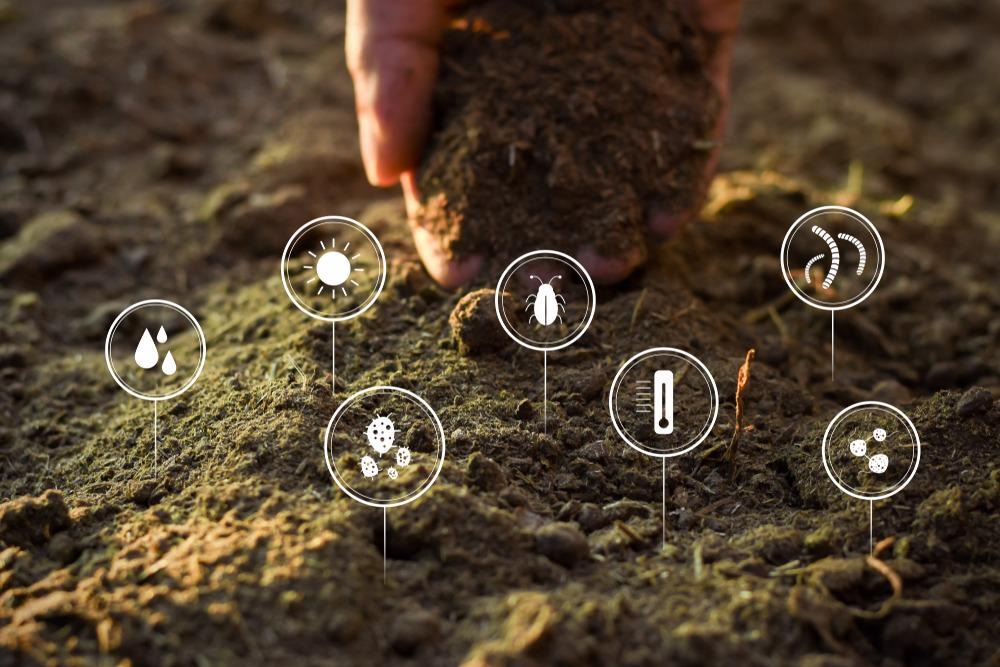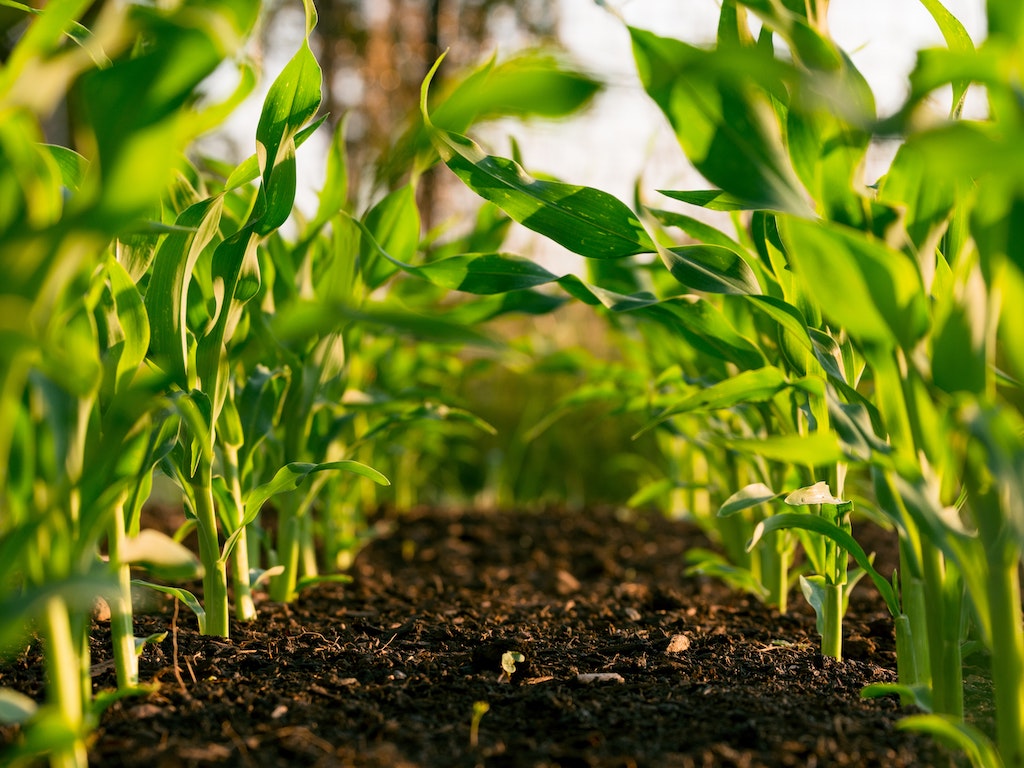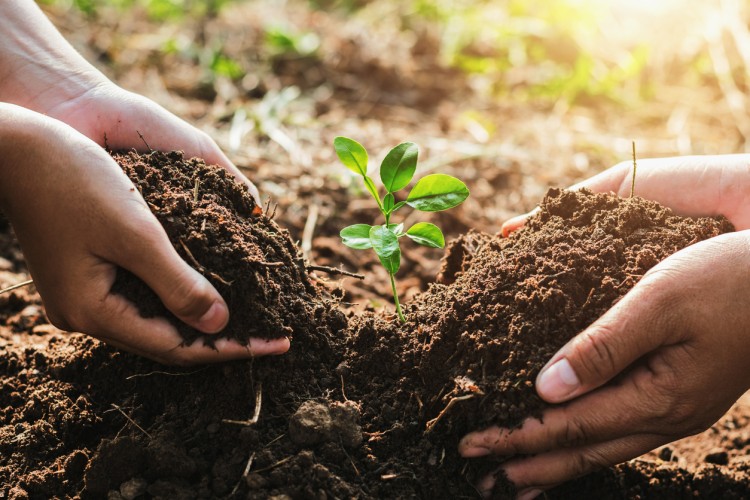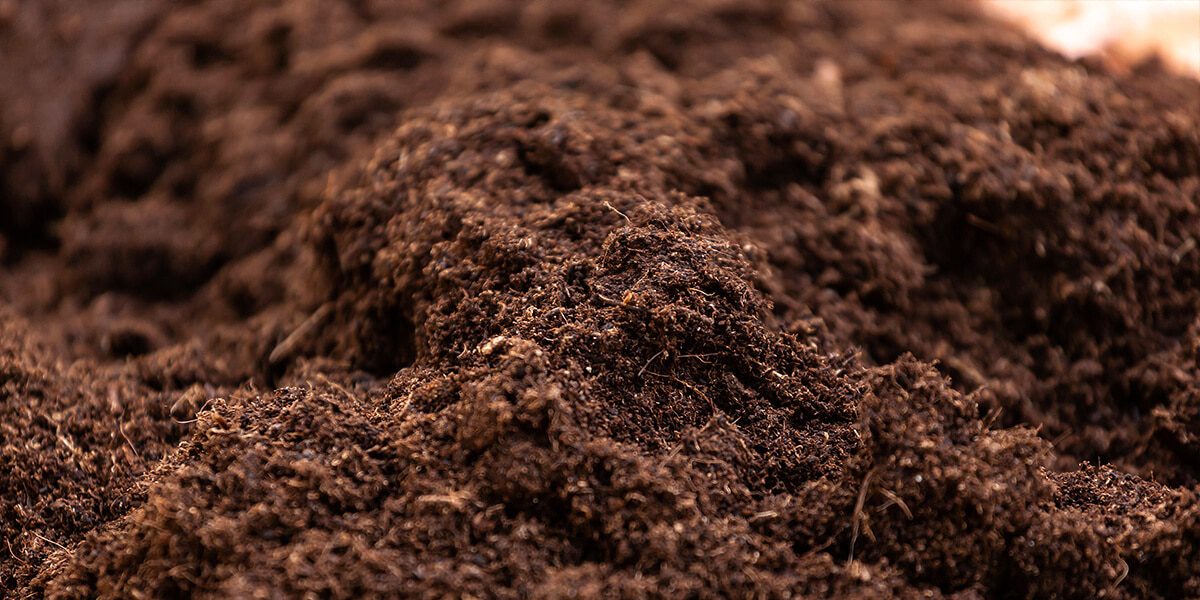Beneath the expansive landscapes that shape our world, hidden from the naked eye, lies a symphony of life that quietly orchestrates the health and resilience of our planet – the intricate realm of soil biodiversity. This unseen ecosystem, woven with a delicate tapestry of microorganisms, fungi, and an array of life forms, forms the bedrock of agricultural vitality and ecological sustainability. In this exploration, we embark on a journey to unravel the profound significance of soil biodiversity, delving into its mysterious depths, understanding its role in agriculture, and recognizing the critical need to foster and protect this silent, underground ecosystem.
The soil, often perceived as a mere foundation for plant life, is, in reality, a thriving metropolis of biodiversity. From the microscopic dance of bacteria to the intricate network of fungal hyphae, this concealed world pulses with activity, contributing to the fertility, structure, and resilience of our Earth. In this exploration, we seek to peel back the layers of soil, metaphorically and literally, to reveal the rich biodiversity that sustains life above and below the surface.
Understanding Soil Biodiversity:

Soil biodiversity, a term that encapsulates the intricate variety of life within the soil, creates a captivating tableau that extends beyond what meets the eye. In this subterranean realm, microorganisms like bacteria and fungi, larger organisms such as insects and worms, and the labyrinthine network of plant roots coalesce to form an unseen world teeming with vitality and purpose.
This hidden ecosystem, though imperceptible to us, stands as the bedrock of the soil’s health and productivity. It’s a bustling community where each organism, from the microscopic to the more discernible, plays a unique role, contributing to an elaborate web of interactions that governs the soil’s fundamental dynamics.
At the heart of soil biodiversity, microbial maestros conduct a symphony of biochemical activities. Bacteria, diverse in form and function, engage in nutrient cycling and organic matter decomposition. Fungi, with their intricate mycelial threads, form alliances with plant roots, enhancing nutrient uptake and promoting soil structure. These unseen architects of the soil create a harmonious balance that resonates throughout the ecosystem.
Beyond the realm of microorganisms, larger inhabitants take center stage in the underground drama. Insects, with their intricate burrows and tunnels, facilitate aeration and water movement within the soil. Earthworms, tireless workers of the subterranean landscape, contribute to soil structure improvement through their burrowing activities. Plant roots, extending their delicate tendrils in search of nutrients, establish symbiotic relationships with microorganisms, fostering a dynamic nutrient exchange.
The beauty of soil biodiversity lies in the intricate relationships that interweave throughout this underground tapestry. Each organism, regardless of its size, participates in a grand ecological ballet, influencing nutrient cycling, soil structure, and the overall resilience of the ecosystem. The waste of one organism becomes the nourishment for another, creating a sustainable cycle of life that supports the health and vigor of the soil.
As we unravel the layers of soil biodiversity, we discover that it is more than a mere assortment of organisms; it is a dynamic, living community that orchestrates the symphony of life beneath our feet. In the subsequent sections, we’ll delve deeper into the roles these organisms play, explore their impact on sustainable agriculture, and address the challenges that this intricate ecosystem faces in our ever-evolving world. Join us as we continue our journey through the unseen wonders of the soil, where life flourishes in a rich tapestry below the surface.
The Ecological Roles of Soil Microorganisms:

In the hidden recesses of the soil, microorganisms emerge as the unsung heroes, orchestrating a symphony of ecological roles that form the very foundation of soil biodiversity. Their microscopic existence belies the colossal impact they wield, undertaking a myriad of crucial functions that breathe life into the earth beneath our feet.
At the forefront of their ecological contributions, these microorganisms act as decomposition maestros, breaking down organic matter into its elemental components. Fallen leaves, decaying plant material, and other organic debris are transformed into valuable nutrients that rejuvenate the soil. This vital process not only cleanses the environment but also ensures a continuous recycling of nutrients, fostering a sustainable and regenerative soil ecosystem.
Microorganisms don the role of nutrient cyclers, seamlessly cycling essential elements like nitrogen, phosphorus, and potassium. Through their metabolic activities, they convert complex organic compounds into forms that plants can readily absorb. This nutrient cycling not only nourishes the current generation of plants but also lays the groundwork for future growth, creating a harmonious cycle of life within the soil.
In their diversity lies their strength. The microorganisms within the soil create a robust and resilient ecosystem that enhances the soil’s ability to resist diseases. Certain microorganisms act as natural antagonists, suppressing the growth of harmful pathogens and protecting plant roots from infections. This microbial defense mechanism contributes to the overall health and vitality of the soil, ensuring a thriving environment for plant life.
Microorganisms showcase unparalleled adaptability to environmental changes, acting as guardians of soil resilience. As climate patterns shift and environmental conditions fluctuate, these microscopic entities adjust their metabolic activities to maintain a balanced ecosystem. This adaptability not only ensures their survival but also fortifies the soil against external stresses, safeguarding its ability to sustain life.
Perhaps their most crucial role lies in their facilitation of plant life. Microorganisms forge symbiotic relationships with plant roots, forming mycorrhizal networks that enhance nutrient absorption. They produce growth-promoting substances, contributing to root development and overall plant vigor. In this intricate dance, microorganisms act as essential partners, fostering a harmonious collaboration between the microbial community and the plant kingdom.
In unraveling the ecological roles of soil microorganisms, we uncover a dynamic and interconnected world where these tiny beings wield immense influence. Their contributions extend beyond the microscopic realm, shaping the health, fertility, and resilience of the soil. As we continue our journey into the depths of soil biodiversity, we’ll explore how these roles impact sustainable agriculture and delve into the ongoing challenges faced by these microbial stewards of the earth. Join us in unveiling the hidden tapestry of life beneath the surface, where the smallest organisms play the grandest roles in nurturing our planet.
Biodiversity and Sustainable Agriculture:

In the vast expanse of agricultural landscapes, soil biodiversity emerges as the linchpin, guiding farmers towards sustainable practices that harmonize with the intricate rhythms of nature. Diverse microbial communities, thriving beneath the surface, become indispensable partners in this endeavor, contributing to a cascade of benefits that extend far beyond the roots of the plants they sustain.
A diverse array of microorganisms, working in unison, acts as the structural engineers of the soil. They create a dynamic matrix that enhances soil structure, promoting aeration and water infiltration. This enhanced soil structure, a direct result of their synergistic activities, prevents soil compaction and erosion, ensuring a resilient foundation for plant growth. The microscopic architects collaboratively sculpt a nurturing environment that not only supports existing crops but also lays the groundwork for sustained agricultural productivity.
In the pursuit of sustainable agriculture, water conservation is paramount. Soil biodiversity plays a pivotal role in this aspect by functioning as water-wise guardians. The intricate networks of fungal mycelia and the activities of soil-dwelling organisms enhance water retention capacity. This means that during periods of scarcity, the soil becomes a reservoir, providing a steady supply of water to plant roots. By optimizing water usage, soil biodiversity becomes a sustainable solution to mitigate the impacts of changing climates and erratic rainfall patterns.
One of the defining features of sustainable agriculture lies in the reduction of external inputs, such as fertilizers. Soil biodiversity, through its virtuoso performance in nutrient cycling, ensures that essential elements are efficiently recycled within the ecosystem. Microorganisms break down organic matter, releasing nutrients in forms that plants can readily absorb. This natural nutrient cycling not only nourishes the current crop but also sets the stage for subsequent plant generations. The result is a reduction in the reliance on artificial fertilizers, mitigating environmental impacts and lowering production costs.
Diverse microbial communities act as allies in pest management, reducing the need for chemical pesticides. Certain microorganisms exhibit antagonistic properties against harmful pests and pathogens, acting as natural protectors of plant health. This biological control mechanism contributes to a decrease in pesticide usage, minimizing the ecological footprint of agriculture. The balance achieved through soil biodiversity becomes a sustainable solution that safeguards crops while preserving the delicate harmony of the ecosystem.
In the realm of sustainable agriculture, soil biodiversity emerges not only as a cornerstone but as a guiding force towards a regenerative and resilient future. The collaborative efforts of microorganisms contribute to improved soil structure, efficient water use, and reduced reliance on external inputs, thereby fostering an environmentally friendly and cost-effective approach to farming. As we navigate the complexities of modern agriculture, understanding and harnessing the potential of soil biodiversity stand as key pillars in cultivating a harmonious relationship between humanity and the land we depend upon.
Threats to Soil Biodiversity:

In the intricate tapestry of soil biodiversity, a myriad of threats loom, casting shadows on the delicate balance that sustains life below the surface. Human activities, in their relentless pursuit of agricultural productivity and development, have inadvertently become architects of challenges that imperil the very essence of soil biodiversity. Understanding these threats is a crucial step towards safeguarding the health of our soils and securing the longevity of agricultural productivity.
The pursuit of higher yields often leads to intensive agricultural practices that disturb the equilibrium of the soil ecosystem. Continuous monoculture, excessive tillage, and the overuse of agrochemicals disrupt the diverse microbial communities that thrive beneath the surface. The relentless pressure on the soil for increased productivity can lead to a decline in microbial diversity, compromising the ecosystem’s ability to perform essential functions.
As landscapes transform due to deforestation and alterations in land use, soil biodiversity faces unprecedented challenges. The removal of natural vegetation strips away the intricate habitats that support diverse microbial life. The ensuing loss of organic matter and disruption of established ecosystems create a hostile environment for many soil organisms. The repercussions extend beyond the immediate impact, with long-term consequences on soil health and resilience.
The use of chemical inputs, such as synthetic fertilizers and pesticides, poses a significant threat to soil biodiversity. While these inputs aim to enhance agricultural productivity, they often come at a cost to the delicate balance within the soil. Chemical residues can disrupt microbial communities, leading to imbalances that reverberate through the entire ecosystem. Soil pollution further exacerbates the challenges, as contaminants leach into the soil, affecting both the microbial inhabitants and the overall health of the soil.
Rapid urbanization and expansive infrastructure projects encroach upon fertile soils, fragmenting landscapes and disrupting the intricate networks of microbial life. The conversion of natural habitats into concrete jungles reduces the available space for soil organisms to thrive. This physical disruption, coupled with increased impervious surfaces, alters water flow patterns and exacerbates soil erosion, further contributing to the degradation of soil biodiversity.
Recognizing the threats posed to soil biodiversity is the first step in devising strategies for its preservation. Sustainable agricultural practices, reforestation efforts, and the reduction of chemical inputs are pivotal measures in mitigating these challenges. Cultivating an awareness of the delicate balance within the soil and fostering a collective commitment to responsible land management are essential for ensuring the longevity of agricultural productivity and the health of our planet’s vital soils. In acknowledging our role as stewards of the land, we can pave the way for a future where the intricate worlds beneath our feet flourish in harmony with human activities.
Nurturing Soil Biodiversity:
Amidst the challenges faced by soil biodiversity, there is hope in the form of actionable steps that beckon us to become stewards of the soil, fostering a harmonious relationship with the intricate worlds beneath our feet. By embracing practices that align with the natural rhythms of the soil ecosystem, we can not only nurture but enhance the diversity of life teeming within the earth.
Implementing agroecological practices stands as a beacon of sustainable agriculture. Practices such as cover cropping introduce a dynamic interplay of plant species that not only protect the soil surface but also contribute to nutrient cycling and microbial diversity. The live roots of cover crops provide sustenance to the underground microbial community, ensuring a continual dance of life within the soil. Crop rotation further diversifies the nutrient demands placed on the soil, preventing depletion and promoting a balanced microbial environment. Reduced tillage preserves the intricate structures formed by microorganisms, preventing disruption and promoting a thriving soil ecosystem.
A conscious reduction in chemical inputs emerges as a crucial step in nurturing soil biodiversity. By minimizing the use of synthetic fertilizers and pesticides, we create an environment that encourages the flourishing of diverse microbial communities. Chemical inputs, while addressing immediate agricultural needs, can have far-reaching consequences on the delicate balance within the soil. Opting for organic farming practices, which rely on natural fertilizers, compost, and biological pest control, fosters an environment conducive to the well-being of soil microorganisms.
The embrace of organic farming practices embodies a holistic approach to nurturing soil biodiversity. Organic farming emphasizes the use of natural inputs, promoting soil health without compromising the intricate microbial communities. By avoiding synthetic chemicals, organic farming creates a symbiotic relationship between plants and microorganisms, allowing the soil to thrive in its natural state. Practices such as composting, cover cropping, and the use of organic amendments become integral components of organic farming, contributing to the restoration of soil health and the preservation of biodiversity.
Beyond agricultural practices, implementing soil conservation techniques plays a vital role in nurturing soil biodiversity. Contour plowing, terracing, and the use of windbreaks help prevent soil erosion, preserving the habitat for soil-dwelling organisms. These techniques not only protect the physical structure of the soil but also maintain the stability of microbial communities. By reducing soil disturbance, we create an environment where microorganisms can thrive, contributing to the overall health and resilience of the soil.
In these actionable steps lies the power to not only nurture but amplify the richness of soil biodiversity. As custodians of the land, we hold the responsibility to tread lightly, recognizing the delicate balance within the soil and cultivating practices that enhance rather than diminish the intricate ecosystems beneath our feet. Through the collective adoption of sustainable and regenerative approaches, we pave the way for a future where soil biodiversity flourishes, sustaining life and ensuring the vitality of our planet’s most vital resource.
Conclusion: Cultivating a Harmonious Relationship with the Soil:

As we step forward into the future, let us carry with us the lessons learned from the silent world beneath our feet. By cultivating practices that prioritize the preservation and enhancement of soil biodiversity, we sow the seeds for a future where agriculture coexists harmoniously with nature. The silent symphony of the soil, when nurtured and protected, becomes a source of abundance, ensuring a resilient and fruitful legacy for generations to come.
In conclusion, let our footsteps on this Earth be guided by the understanding that our actions today echo through the silent ecosystems beneath us, shaping a harmonious relationship with the soil and securing the vitality of our planet for the future. Contact RhizeBio today!
